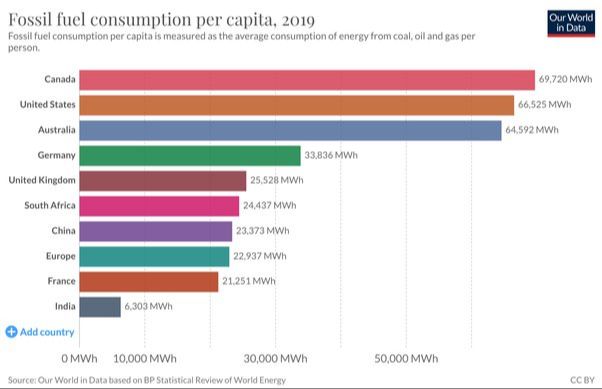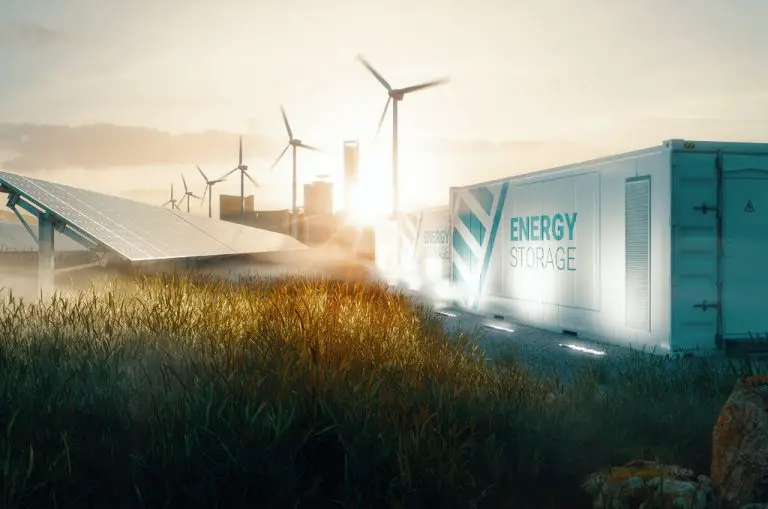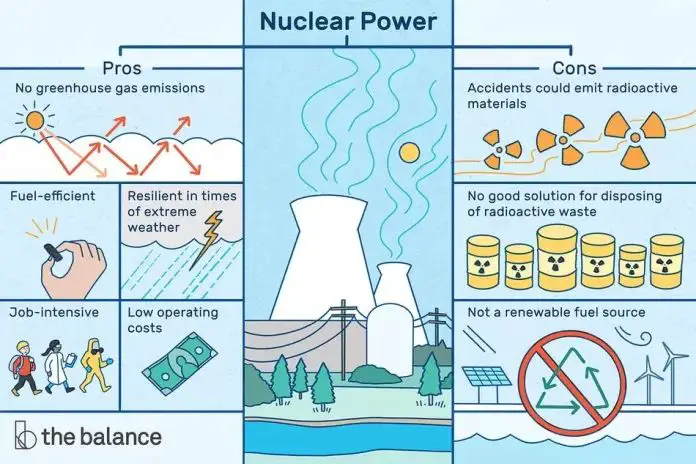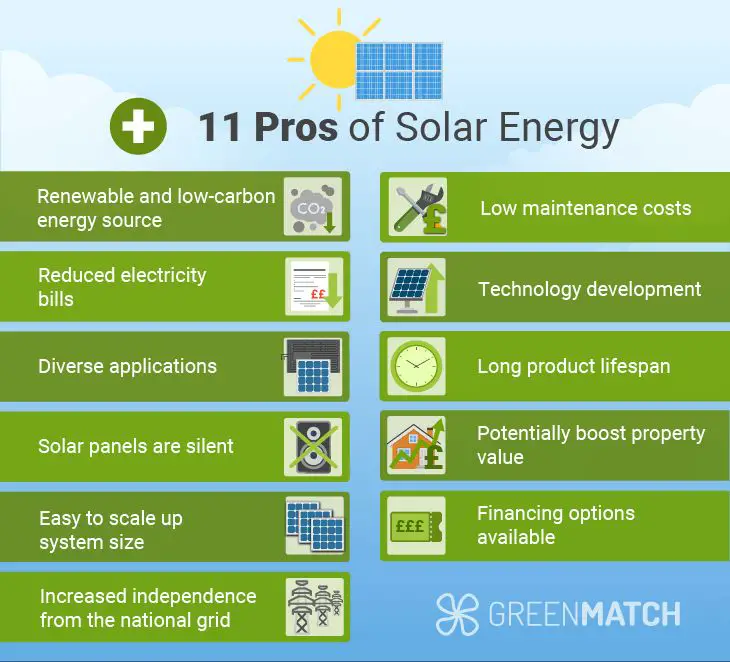What Are The Positive And Negative Effects Of Renewable Resources?
Renewable resources are materials that replenish naturally and can be sourced continuously. They are obtained from ongoing natural processes and can be replaced or replenished as we use them. Examples include sunlight, wind, water, geothermal, biomass, and some organic waste.
The main benefits of renewable resources are reduced carbon emissions, energy independence, economic opportunities, and lower energy costs. However, there can also be some drawbacks such as high upfront investment costs, intermittent energy supply, and potential environmental impacts.
Positive Effects
There are several positive effects associated with renewable energy, such as reduced greenhouse gas emissions, energy independence and security, economic opportunities and job creation, and lower long-term energy costs.
Using renewable energy sources like solar, wind, hydroelectric, geothermal, and biomass can significantly reduce greenhouse gas emissions compared to fossil fuels like coal, oil, and natural gas (source). Renewables produce little to no global warming emissions, which helps combat climate change.
Renewable energy also increases energy independence and security by relying more on domestic resources. This reduces dependence on imported fuels, exposure to global price volatility, and vulnerabilities from international conflicts (source). Energy security is improved with more decentralized and distributed generation.
The renewable energy industry provides economic opportunities and creates jobs related to manufacturing, installation, and maintenance. Investing in renewables stimulates local economies, especially rural areas (source). Price declines and technological advances are making renewables more cost competitive.
Once installed, the cost of operating renewable energy equipment is very low. Sunlight, wind, water flows, and geothermal heat are free. This gives renewables a price advantage over fossil fuels in the long run.
Negative Effects
While renewable energy has many advantages, there are also some drawbacks and challenges to overcome. One key negative is the higher upfront costs associated with building facilities and infrastructure for renewables compared to fossil fuels. The initial investment required is often cited as a barrier to adopting renewables like wind, solar, and hydropower more widely (UCSUSA). However, over the lifespan of a renewable energy system, the fuel costs are minimal, so the long-term costs can be lower.
Another downside is that renewable energy sources like wind and solar are intermittent – they only generate power when the wind is blowing or sun is shining. This can cause reliability challenges for grid operators, who need to match power supply with demand (GreenMatch). Additional infrastructure investments such as energy storage and transmission improvements can help overcome intermittency.
There are also some environmental concerns with certain renewables. For example, large hydropower dams can disrupt river ecosystems, and wind turbines may negatively impact birds and bats. Proper siting and mitigation measures can help reduce these potential impacts. Overall, the environmental benefits of renewable energy are overwhelmingly positive compared to fossil fuels, but site-specific impacts should be evaluated (RegenPower).
Reduced Emissions
Transitioning to renewable energy sources like solar, wind, geothermal, and hydropower can significantly reduce carbon emissions compared to fossil fuels like coal, oil, and natural gas. According to IRENA, boosting renewables and energy efficiency through electrification can provide over 90% of the necessary reductions in energy-related carbon emissions (source). Renewables like wind and solar generate little to no carbon emissions when producing electricity. This differs greatly from fossil fuels which emit CO2 when burned for energy. One study found that on average, renewable sources emit around 50g or less of CO2 per kWh compared to 600 to over 1000g per kWh for natural gas and coal (source). Increased renewable energy consumption also directly correlates with reduced CO2 emissions. Research shows a 1 percentage point increase in renewable energy use leads to a 1.25% decrease in per capita emissions (source). By transitioning away from fossil fuels to clean renewables, we can significantly curb greenhouse gas emissions and reduce contribution to climate change.
Energy Independence
One of the key benefits of renewable energy is achieving greater energy independence for countries reliant on imported fossil fuels. Renewable sources like wind, solar, hydroelectric, and bioenergy can help produce energy domestically, reducing the dependence on fuel imports.
For example, the United States could potentially become a net exporter of energy by expanding domestic renewable energy production from sources like wind and solar. This would reduce the reliance on imported oil and natural gas, bringing greater energy security.
Similarly, European countries have been investing heavily in wind and solar to become less dependent on imported Russian natural gas. Expanding renewable energy improves national security and resilience against supply shocks caused by geopolitical conflicts or reliance on a small number of exporters.
In summary, renewable resources allow countries to tap into local energy sources like wind, sunlight, water, and biomass instead of relying on imports. This brings major benefits including improved national security, trade balance, and control over energy supply.
Economic Opportunities
The renewable energy sector has seen tremendous growth in recent years, creating new economic opportunities and jobs globally. According to the International Renewable Energy Agency (IRENA), there were approximately 13.7 million jobs in the renewable energy industry worldwide in 2022 (source). Renewable job numbers have been steadily increasing as more countries adopt policies to transition away from fossil fuels.
In the United States, a report from the Department of Energy found that clean energy jobs grew in every state in 2022 (source). There were over 12,000 new jobs added in solar alone, representing 3.7% growth. The wind industry saw around 5,000 new jobs, a 4.5% increase. Growth is expected to continue as investment in renewable energy ramps up globally.
The renewable energy transition presents major opportunities for job creation, economic development, and new industries. Policymakers around the world are focused on seizing these opportunities through training programs, incentives, and investments in renewable infrastructure.
Lower Energy Costs
The costs of renewable energy technologies like solar and wind have declined significantly in recent years. According to IRENA, the global weighted average levelized cost of electricity (LCOE) for new onshore wind projects fell by 15% in 2021 compared to 2020. For utility-scale solar PV, costs fell by 13% during the same period.
These cost declines are driven by technology improvements, economies of scale, and increased competition within supply chains. IEA analysis suggests utility-scale solar and wind costs could resume their downward trajectory in 2023-2024 after recent supply chain issues caused a pause in the decline.
The fuel costs for renewable energy are very low to zero in comparison with fossil fuels. The wind and sun are free, delivering savings on operating costs over the project lifetime. This helps offset the higher upfront capital costs associated with building renewable power plants.
As renewable energy costs fall, they become increasingly competitive with conventional power generation from coal and natural gas. Lower costs allow more renewable capacity to be built, reducing reliance on fossil fuels.
Higher Upfront Costs
One of the major drawbacks of renewable energy sources is that they require higher upfront costs for construction and installation compared to conventional fossil fuel power plants. According to a Bloomberg article, the price of renewable electricity is almost entirely driven by the initial capital expenditure required to build the facility. In contrast, fossil fuel plants have lower construction costs but ongoing fuel expenses.
For example, building a large-scale solar or wind farm can cost significantly more upfront compared to a natural gas power plant. According to Just Energy, a 100MW solar photovoltaic plant may cost around $130 million to install, while a comparable natural gas plant costs roughly $65 million. The higher initial investment presents a barrier for many companies and utilities looking to adopt renewable power.
Government incentives like tax credits and rebates have helped lower the upfront cost gap between renewables and fossil fuels. However, the high initial capital expenditure remains one of the key challenges limiting faster adoption of renewable energy worldwide.
Intermittent Supply
One of the biggest challenges with renewable energy sources like solar and wind is their intermittent nature, which means they are not available on demand and fluctuate based on weather conditions. According to Scientific American, the output from solar panels can drop due to cloud cover, while wind generation falls during periods of low wind speeds [1]. This intermittency makes it difficult to integrate large amounts of solar and wind energy into the electric grid, since supply and demand must be continuously balanced.
The intermittent generation from renewable sources creates complications in planning and operating the electric grid. Unlike fossil fuel plants that can be dispatched when needed, the availability of renewable resources cannot be easily controlled. The EnergyX article notes that solar energy obviously cannot be produced at night, which means storage solutions are required for overnight power [2]. Storage can help smooth out the variability, but adds extra costs and technical limitations.
The Bonneville Power Administration explains that dealing with intermittent renewables requires flexible power generation that can rapidly ramp up when wind or solar generation decreases. This often means relying on natural gas plants or hydroelectric dams. Energy storage through batteries and pumped hydro can also help manage fluctuations in supply [3]. However, affordable grid-scale storage remains a major challenge.
Environmental Impacts
Renewable energy sources can have both positive and negative impacts on the environment. One notable area of impact is land use. Large-scale solar and wind farms require substantial amounts of land since the facilities need to be spread out to efficiently capture solar irradiation or wind (UCSUSA). For example, a 1,000 megawatt wind farm could require approximately 360,000 acres of land (The Wilderness Society). Large-scale projects like this bring concerns over habitat loss and fragmentation. Some renewable facilities have impacted sensitive ecosystems like deserts and grasslands (US DOE).
There are also concerns over wildlife impacts. Wind turbines can injure or kill birds and bats through collisions. Appropriate siting of wind farms away from major migration routes and wildlife areas can help minimize risks (UCSUSA). Utility-scale solar facilities have also raised concerns over impacts to desert tortoises, birds, and other wildlife. Careful planning and mitigation strategies are important tools for addressing wildlife impacts of renewable energy projects.





